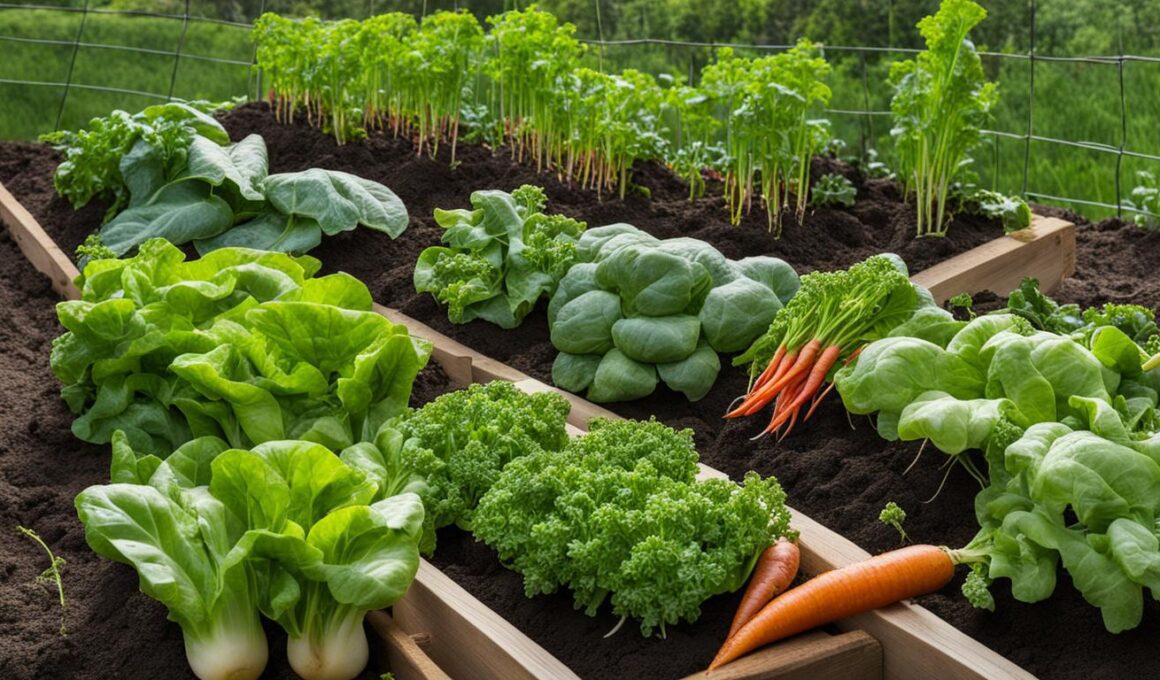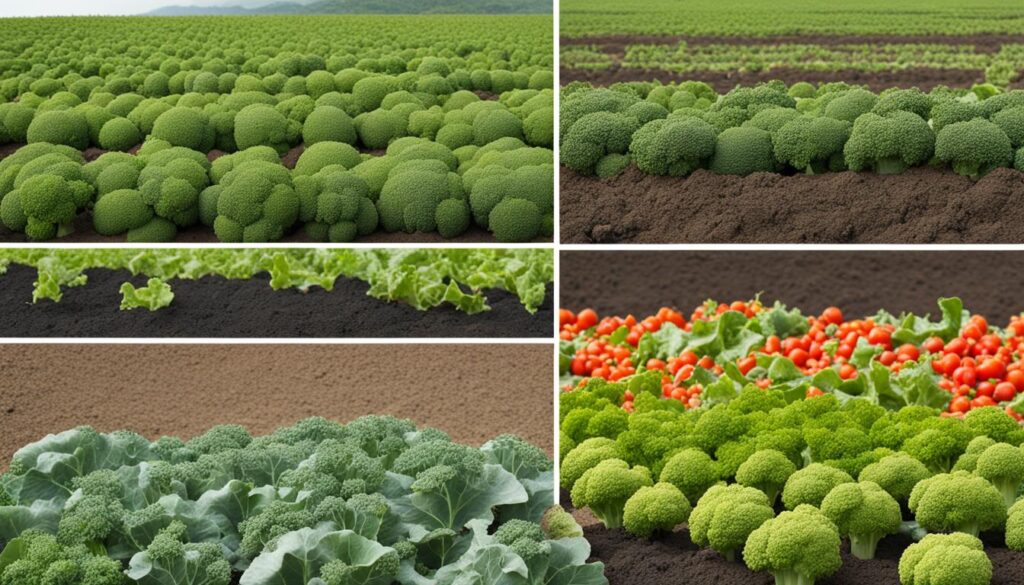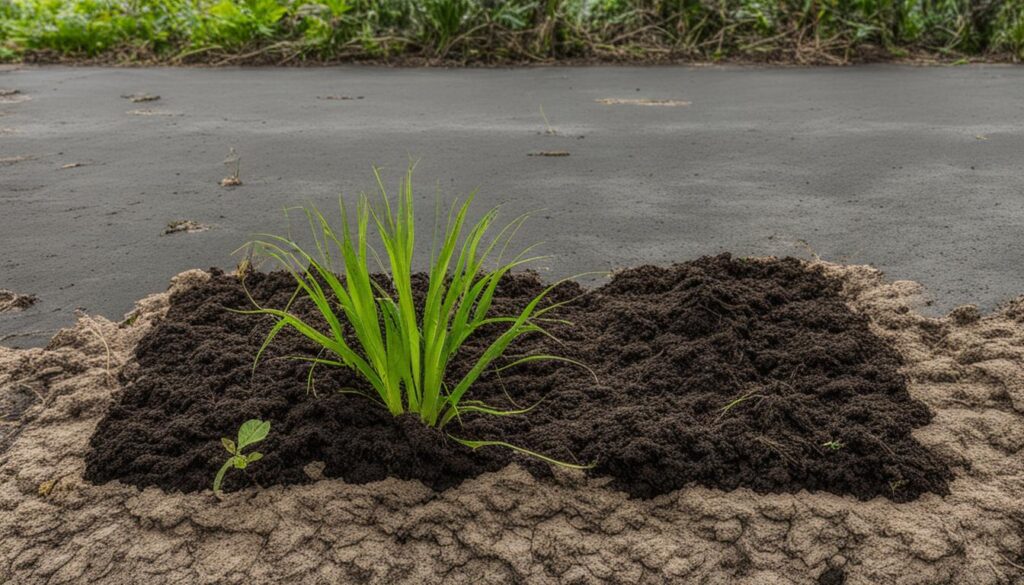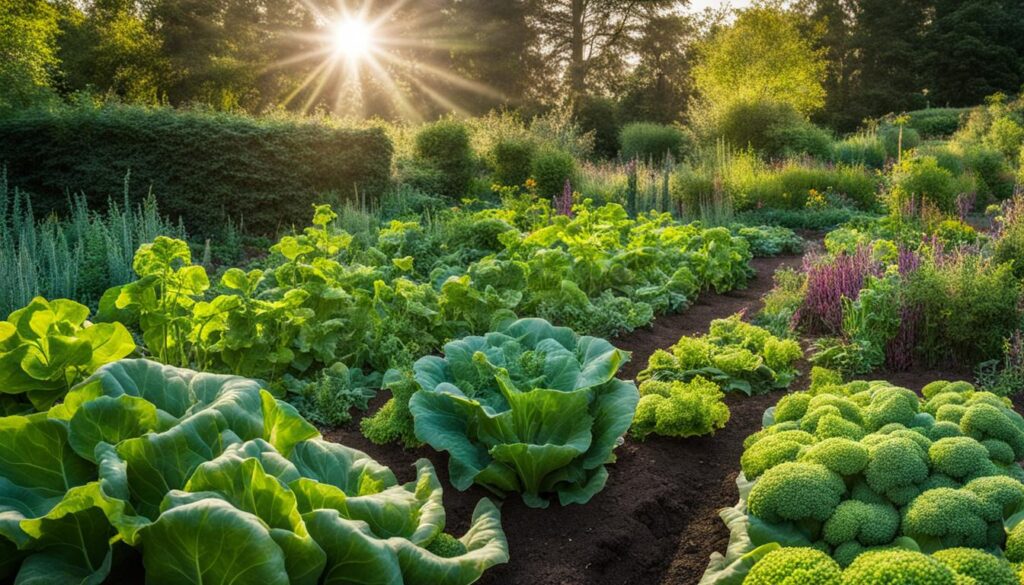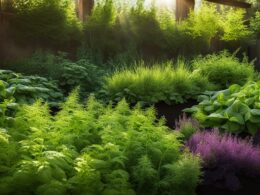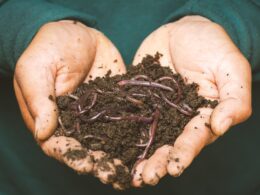Crop rotation is a key practice for any savvy gardener. By strategically planning what to plant after brassicas, you can maximize the benefits of crop rotation and ensure a healthier garden. In this guide, we’ll explore the importance of crop rotation, the advantages it offers, and provide recommendations for what to plant after growing brassicas. Let’s dive in!
Key Takeaways:
- Crop rotation involves planting different crops in different areas each year to prevent pest and disease problems and improve plant health and productivity.
- Traditional crop rotation methods divide crops into four main groups: legumes, root vegetables, leafy greens, and fruit-bearing plants.
- A more sophisticated classification system, like the one offered by the Garden Planner tool, can provide greater flexibility and help in designing longer rotation plans.
- Crop rotation helps with pest control, disease prevention, and nutrient management by reducing pest establishment, preventing the spread of soil-borne diseases, and preventing soil nutrient depletion.
- After growing brassicas, consider planting legumes, root vegetables, solanaceous vegetables, leafy greens, or cucurbits to complement their nutrient requirements and maximize the benefits of companion planting.
How Crop Rotation Works
Crop rotation is a systematic approach to gardening that involves dividing the growing space into different areas and planting crops of the same type together in each area. The primary goal of crop rotation is to improve soil health and optimize plant growth by minimizing pest and disease problems and preventing nutrient depletion.
The crop rotation system works by rotating crops within these designated areas every year. This rotation allows each group of crops to benefit from new ground with its specific requirements, pests, and diseases. By changing the location of crops, the risk of pests establishing themselves and soil-borne diseases spreading is significantly reduced. Additionally, rotating crops helps prevent the depletion of essential nutrients in the soil, as different crops have varying nutrient requirements.
Traditionally, crop rotation divides crops into four main groups: legumes, root vegetables, leafy greens, and fruit-bearing plants. However, using a more sophisticated classification system can provide greater flexibility and allow for a wider permutation of crops. Tools like the Garden Planner offer color-coded plant categories, making it easier to plan longer rotation schedules and track the history of each plot, preventing the repetition of planting the same crop too soon. Longer rotation plans, typically running for three to four years, help reduce soil-borne pests and diseases to harmless levels.
Benefits of Crop Rotation
Crop rotation offers numerous benefits for gardeners. By rotating crops, you can effectively control pests and reduce pest-related issues in your garden. When you plant different crops in the same area each year, pests that rely on a particular crop for survival are less likely to establish themselves. This disrupts their life cycle and helps keep their populations in check.
Crop rotation also plays a crucial role in disease prevention. Different plants are susceptible to specific pathogens, which can build up in the soil over time. By rotating crops, you interrupt the pathogen’s lifecycle and reduce the risk of disease outbreaks. This is an effective and organic way to maintain the health of your garden.
Nutrient management is another advantage of crop rotation. Different crops have different nutrient requirements. By rotating crops, you can prevent soil nutrient depletion, as each crop group can take advantage of the specific nutrients left by the previous crop. This reduces the need for artificial fertilizers and promotes more sustainable gardening practices.
| Benefit | Description |
|---|---|
| Pest Control | By rotating crops, you can disrupt the lifecycle of pests and reduce their populations in your garden. |
| Disease Prevention | Rotating crops helps prevent the buildup of pathogens in the soil, reducing the risk of disease outbreaks. |
| Nutrient Management | Each crop group can take advantage of the specific nutrients left by the previous crop, reducing the need for artificial fertilizers. |
Combined with other organic gardening methods, such as composting and cover cropping, crop rotation can help maintain soil fertility and lead to healthier, more productive plants. It is an essential practice for gardeners looking to maximize the benefits of their gardening efforts and achieve a more sustainable and bountiful harvest.
What to Plant After Brassicas
After growing brassicas, it’s important to consider companion planting and choose crops that will thrive after these leafy vegetables. Companion planting is a gardening technique that involves strategically planting complementary crops together to maximize growth and minimize pest problems. By selecting the right plants to follow brassicas, you can create a beneficial environment that promotes healthy growth and helps control pests naturally.
Legumes, such as beans and peas, are excellent choices to follow brassicas. These nitrogen-fixing plants help replenish the soil by converting atmospheric nitrogen into a form that other plants can use. Additionally, legumes provide a nutrient-rich environment for the next crop. Root vegetables, like carrots and beets, also make great companions for brassicas. They benefit from the nutrient-rich conditions created by the previous crop and help break up the soil.
Another option is to plant solanaceous vegetables, including tomatoes and peppers, after brassicas. These plants benefit from the nitrogen-rich soil left by legumes and also help repel certain pests. Leafy greens and cucurbits, such as spinach and cucumbers, have lower nutrient requirements and can be planted after solanaceous crops. They can take advantage of the nutrients left by previous crops and thrive in the well-prepared soil.
Companion Planting Options for Brassicas
- Legumes: beans, peas
- Root vegetables: carrots, beets
- Solanaceous vegetables: tomatoes, peppers
- Leafy greens: spinach, lettuce
- Cucurbits: cucumbers, squash
Table: Companion Planting Guide for Brassicas
| Companion Plants | Benefits |
|---|---|
| Legumes (beans, peas) | Fix nitrogen in the soil, provide nutrients |
| Root vegetables (carrots, beets) | Benefit from nutrient-rich soil, help break up soil |
| Solanaceous vegetables (tomatoes, peppers) | Benefit from nitrogen-rich soil, repel certain pests |
| Leafy greens (spinach, lettuce) | Lower nutrient requirements, use nutrients left by previous crops |
| Cucurbits (cucumbers, squash) | Thrive in well-prepared soil, take advantage of nutrients |
By following proper companion planting practices, you can optimize the growth and health of your garden. Remember to rotate your crops each year and avoid planting the same family of plants in the same spot consecutively. This helps prevent the buildup of pests and diseases and ensures a more balanced and diverse garden ecosystem. With careful planning, you can enjoy a thriving garden with abundant harvests year after year.
– Can Pepino Peppers be planted after Brassicas in my garden?
Yes, you can plant Pepino Peppers after Brassicas in your garden. For the ultimate pepino pepper growing, wait at least 3-4 weeks after the Brassicas have been harvested. Ensure the soil is well-drained and has a pH level of 6-6.5. Space the plants 18-24 inches apart for best results.
Conclusion
Crop rotation is one of the smartest gardening practices you can adopt to ensure a healthier and more bountiful harvest. By implementing crop rotation and companion planting strategies, you can reap a multitude of benefits for your garden.
One of the key advantages of crop rotation is its ability to reduce pest and disease problems. By rotating crops, you disrupt the life cycle of pests and make it harder for them to establish themselves. This means fewer pest control measures and a more naturally balanced garden ecosystem.
Crop rotation also helps prevent soil nutrient depletion. Different crops have different nutrient requirements, and by rotating them, you ensure that the soil doesn’t become exhausted of specific nutrients. This reduces the need for artificial fertilizers and promotes healthier plant growth.
By adopting crop rotation and companion planting, you can create a more diverse and balanced garden. This leads to a healthier garden harvest, with an abundance of fruits, vegetables, and herbs. So, make the most of smart gardening practices and enjoy the rewards of a flourishing garden!
FAQ
How does crop rotation work?
Crop rotation works by dividing the growing space into different areas and planting crops of the same type together in each area. The crops are then rotated every year, so that each group has the advantage of new ground with its specific requirements, pests, and diseases.
What are the benefits of crop rotation?
Crop rotation offers numerous benefits for gardeners. It helps reduce pest problems, prevent the spread of soil-borne diseases, and prevent soil nutrient depletion. It can also lead to healthier, more productive plants and reduce the need for artificial fertilizers.
What should I plant after brassicas?
After growing brassicas, it is beneficial to follow them with certain crops that complement their nutrient requirements and pest control abilities. Legumes, root vegetables, solanaceous vegetables, and leafy greens and cucurbits are good choices to plant after brassicas.
How can companion planting help with crop rotation?
Companion planting involves planting different crops together that benefit each other in some way. By practicing companion planting alongside crop rotation, gardeners can maximize the benefits and create a more balanced and diverse ecosystem in their gardens.
What are the benefits of smarter gardening practices?
Implementing crop rotation and companion planting practices in your gardening routine can lead to healthier, more productive crops, reduce reliance on artificial inputs and chemicals, and result in a more bountiful harvest.





